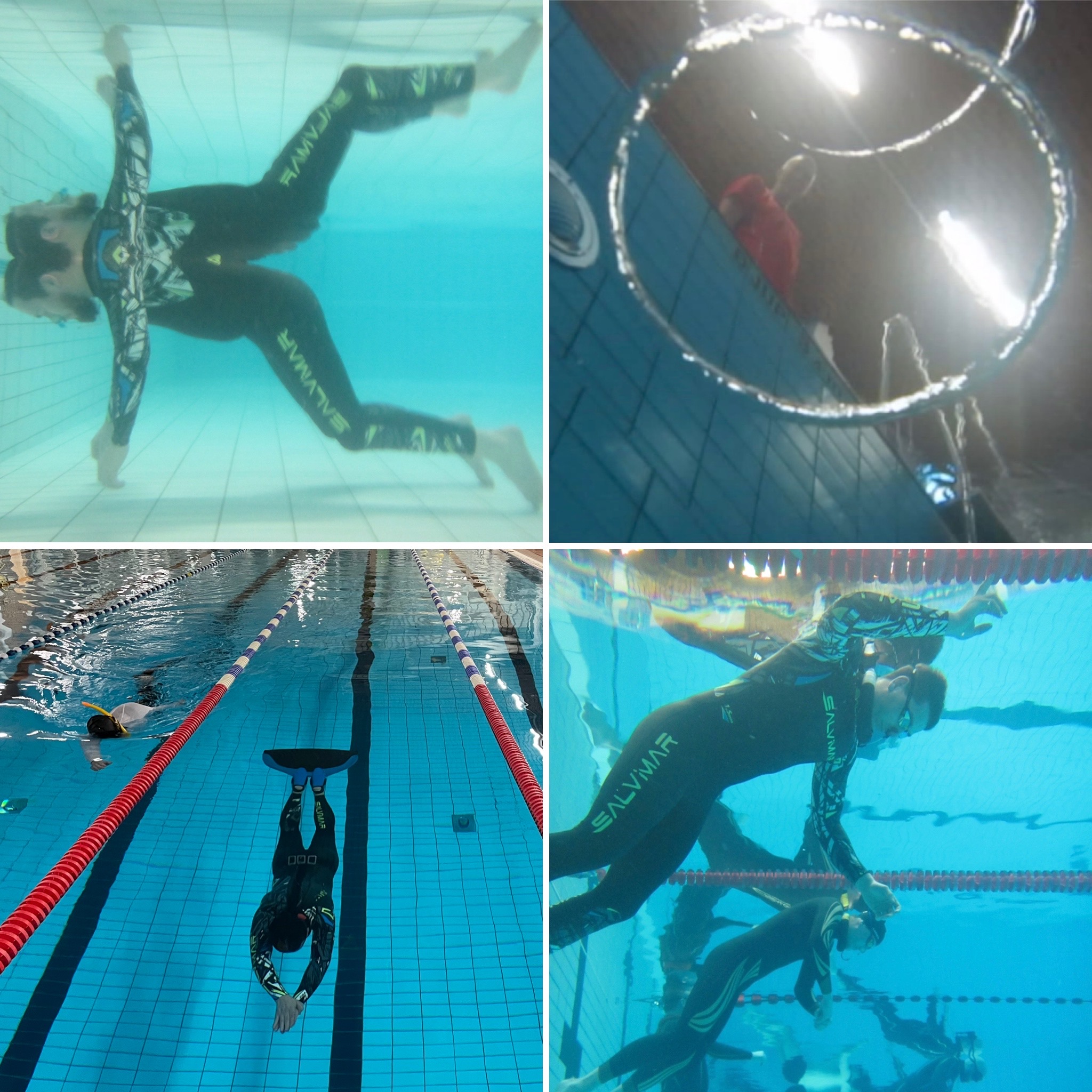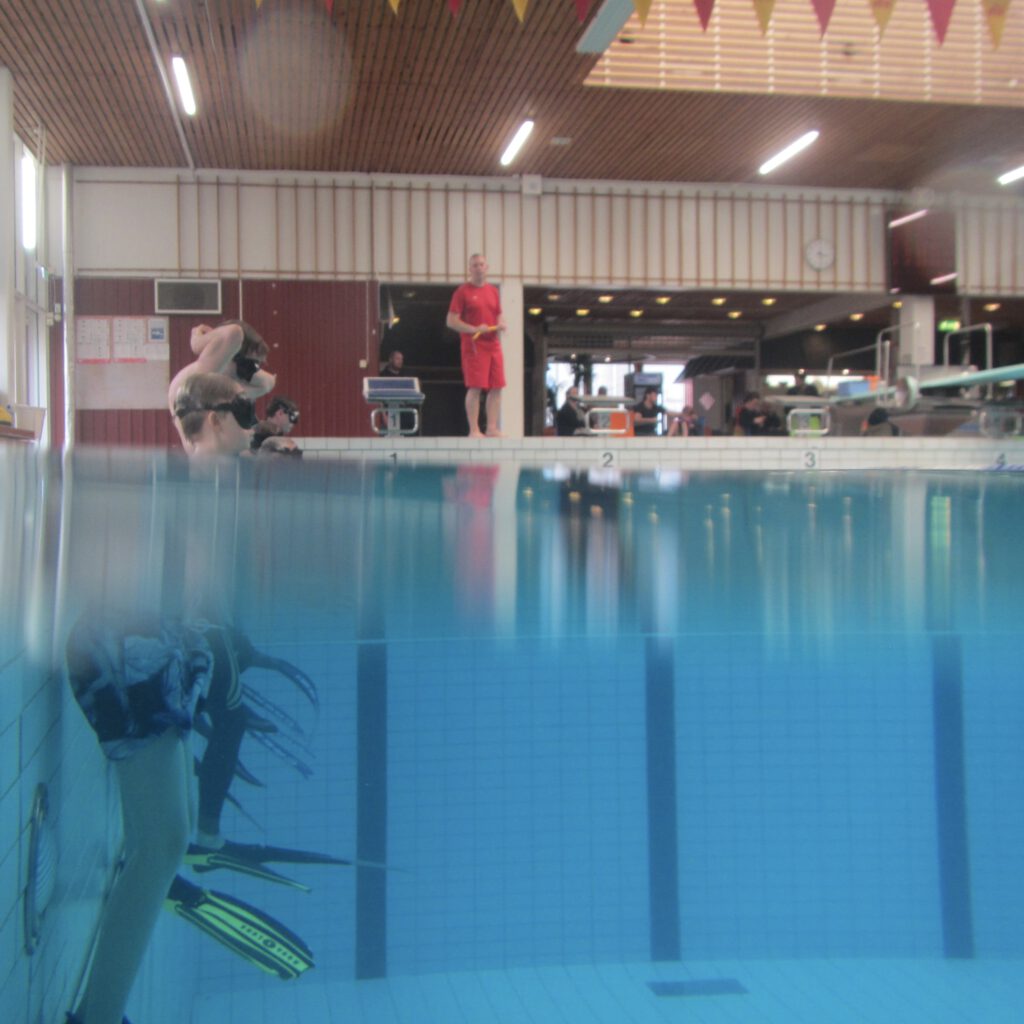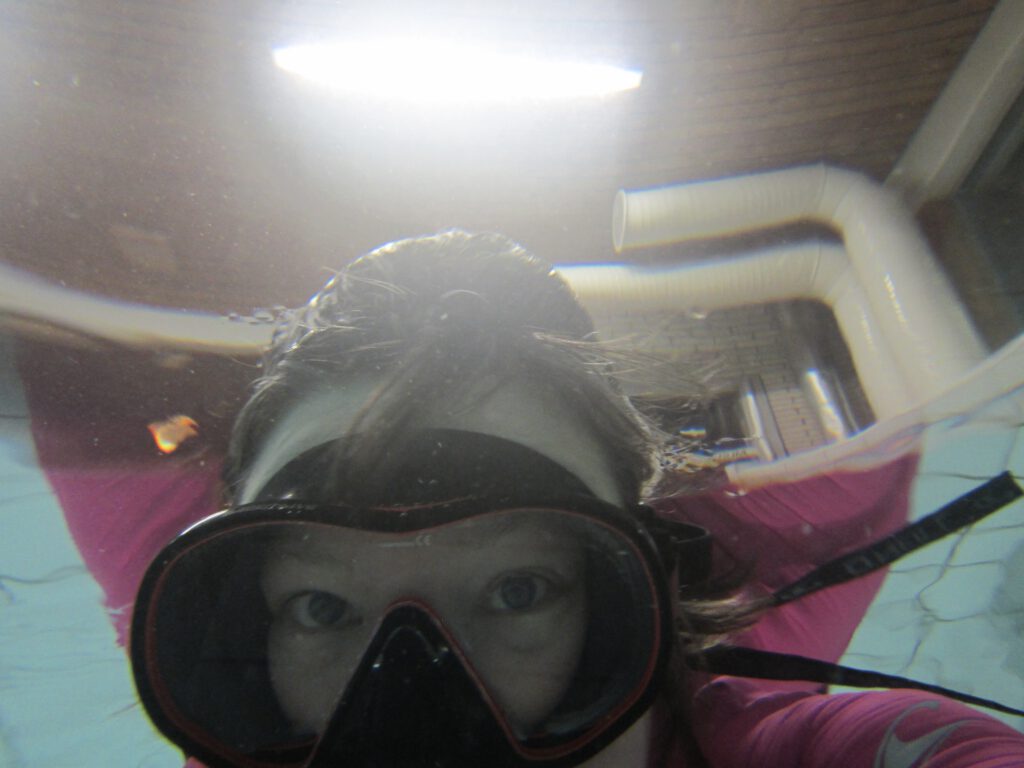
Total internal reflection
In the “static apnea” discipline in freediving, many cool pictures of athletes are taken underwater in a way that plays with the reflection of the athlete in the still water surface. This can lead to pretty spooky pictures (like the one of Victor in the top left). We do have other experiences with water, where there are areas where we can look in (or out), but then others where we can’t: In the bottom left, you see Mats and his shadow, even the individual tiles very clearly in the water. But the further back you look, the more you notice that the picture was taken from outside the water, because you start seeing more reflections in the water surface. In the bottom right, taken from within the water, you see reflections of all the divers and the lane markings in the surface except right at Edvin’s elbow, where we look out of the water and see what’s happening above the pool. And then in the top right, we don’t see the water surface at all — the only reason we know we are looking at Alex from within the water is that there are bubble rings floating between us and him. So what is going on here?
When light goes through a boundary (like the one between air and water; the water surface), it is refracted, or “broken”. This leads to weird illusions like “broken spoons” in glasses of water, and to divers’ heads looking disconnected and not matching their bodies when we look at them right through the water surface with our goggles partly submerged, or in split shots like the one below. This refraction of light leads to the phenomenon we are observing in the image at the very top, which is called “total internal reflection”. If we look at a water surface at shallow angles, it starts acting like a mirror and we cannot see what is going on inside (for example when we look at the ocean and it just looks blue). But if we look at water at a steep angle (for example leaning over the edge of a pier, looking down at the sea stars on the bottom of the sea, or in the case of the bubble ring picture, looking straight up at the water surface), it becomes transparent again and we can look through the surface.
This refraction of light leads to the phenomenon we are observing in the image at the very top, which is called “total internal reflection”. If we look at a water surface at shallow angles, it starts acting like a mirror and we cannot see what is going on inside (for example when we look at the ocean and it just looks blue). But if we look at water at a steep angle (for example leaning over the edge of a pier, looking down at the sea stars on the bottom of the sea, or in the case of the bubble ring picture, looking straight up at the water surface), it becomes transparent again and we can look through the surface.
And that is why trying to take selfies while doing static apnea training can end up looking like what you see below (with some areas of the surface reflecting my arms and the bottom of the pool, and others showing the ceiling lights and air vents instead of more cool reflections) if you don’t think about physics enough… :)
